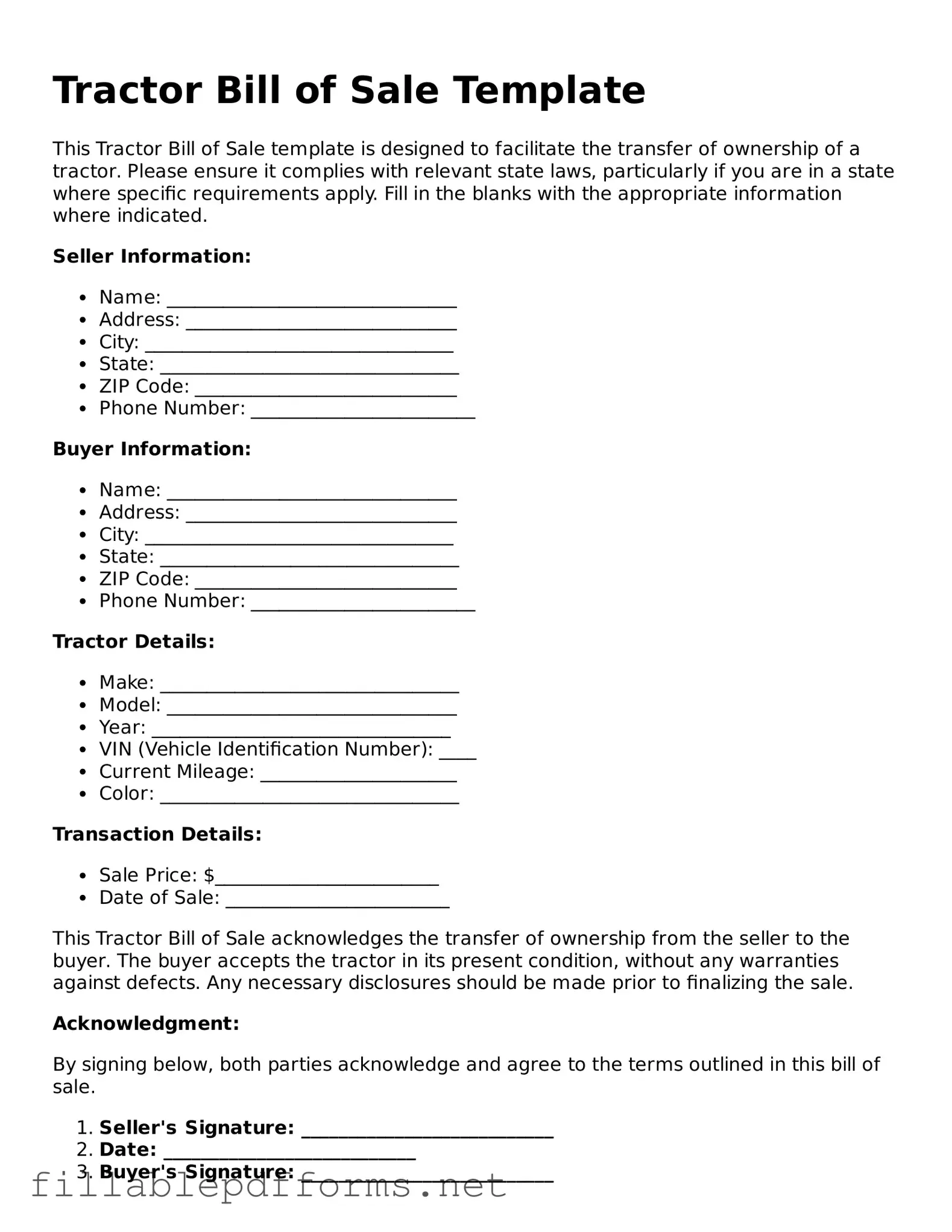The Tractor Bill of Sale form serves as a crucial document in the process of buying or selling a tractor, ensuring that both parties are protected and their interests are clearly outlined. This form typically includes essential details such as the names and addresses of the buyer and seller, the make and model of the tractor, its identification number, and the sale price. Additionally, it may specify the date of the transaction and any warranties or conditions associated with the sale. By providing a written record of the transaction, the form helps prevent disputes and serves as proof of ownership transfer. It is important for both buyers and sellers to understand the significance of this document, as it not only facilitates a smooth transaction but also complies with local laws regarding vehicle sales. Properly completing the Tractor Bill of Sale form can simplify the process of registering the tractor in the new owner's name and ensure that all legal obligations are met.
